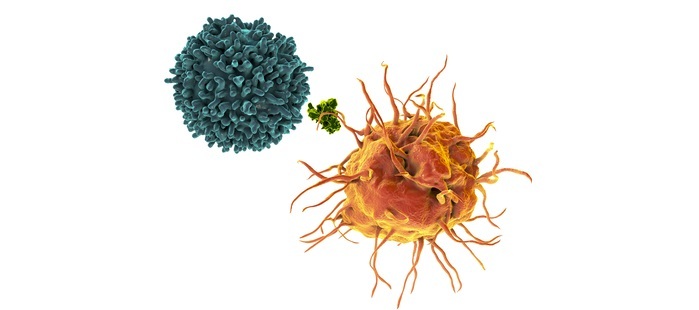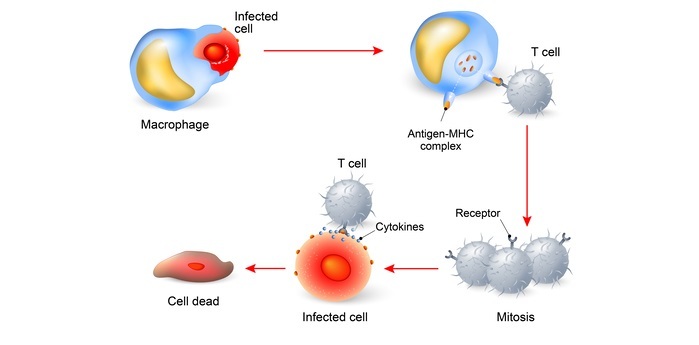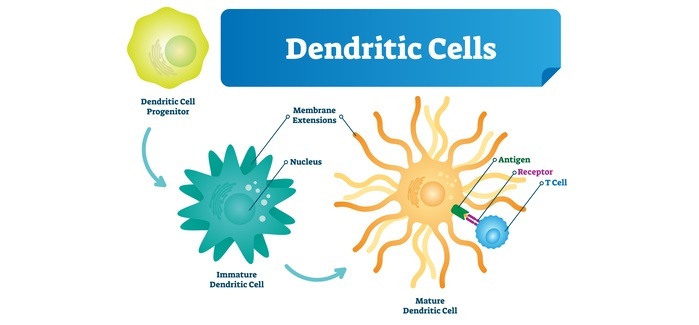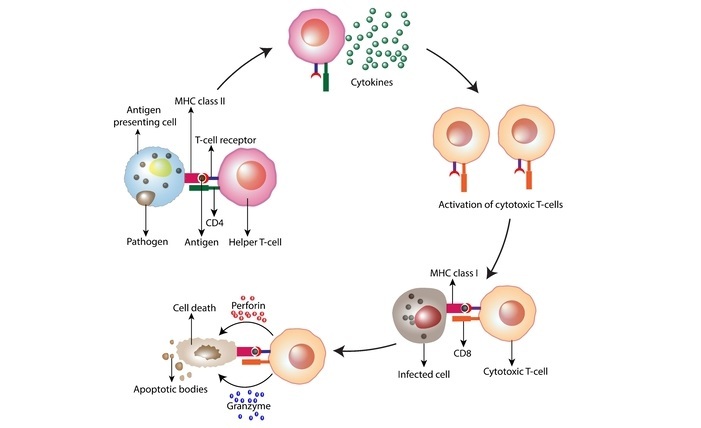
 Data Structure
Data Structure Networking
Networking RDBMS
RDBMS Operating System
Operating System Java
Java MS Excel
MS Excel iOS
iOS HTML
HTML CSS
CSS Android
Android Python
Python C Programming
C Programming C++
C++ C#
C# MongoDB
MongoDB MySQL
MySQL Javascript
Javascript PHP
PHP
- Selected Reading
- UPSC IAS Exams Notes
- Developer's Best Practices
- Questions and Answers
- Effective Resume Writing
- HR Interview Questions
- Computer Glossary
- Who is Who
Accessory Cell or Antigen Presenting Cell (APC)
Introduction
Antigen presenting cells (APCs) are a crucial part of the immune system. They play a crucial role in initiating and regulating immune responses by presenting foreign antigens to immune cells. Accessory cells, also known as antigen-presenting cells, are a subset of immune cells that play an essential role in the immune response. Below we shall discuss in detail the accessory cell or antigen-presenting cell (APC).

Dendritic Cell Presenting Antigen to T-helper Cell
Overview of Accessory Cells
Accessory cells or antigen-presenting cells (APCs) are a group of immune cells that are responsible for presenting antigens to T-cells. They play a crucial role in the initiation and regulation of immune responses. APCs are responsible for identifying and processing foreign antigens and presenting them to T-cells, which are critical for triggering an immune response.
The main function of APCs is to present antigens to T-cells, which activate an immune response. These cells are characterized by their ability to engulf and process antigens, express major histocompatibility complex (MHC) molecules, and co-stimulatory molecules. APCs include dendritic cells, macrophages, and B-cells.

Dendritic Cells
Some of the major characteristics of dendritic cells include -
Dendritic cells (DCs) are a type of accessory cell that plays a critical role in the immune response. They are found in various tissues, including the skin, lymph nodes, and spleen.
DCs are known for their ability to capture and process antigens and present them to T-cells. They are also responsible for initiating the adaptive immune response.
DCs are characterized by their ability to sample the environment and capture antigens.
They have a unique morphology that allows them to extend dendrites, which increases their surface area and enhances their ability to capture antigens. Once DCs have captured antigens, they undergo a process known as antigen processing.
During antigen processing, the antigens are broken down into small peptides and loaded onto MHC molecules.
Once the MHC molecules are loaded with peptides, the DCs migrate to the lymph nodes, where they present the antigens to T-cells.
The interaction between DCs and T-cells is crucial for the initiation of the adaptive immune response. DCs express co-stimulatory molecules, which are essential for the activation of T-cells.

Macrophages
Macrophages are another type of accessory cell that plays a crucial role in the immune response. They are found in various tissues, including the liver, spleen, and lymph nodes. Some of the feature of macrophages are discussed below ?
Macrophages are known for their ability to engulf and destroy foreign pathogens.
They are also responsible for presenting antigens to T-cells.
Macrophages are characterized by their ability to engulf foreign pathogens through a process known as phagocytosis.
Once the pathogens are engulfed, they undergo a process known as antigen processing.
During antigen processing, the pathogens are broken down into small peptides and loaded onto MHC molecules.
Once the MHC molecules are loaded with peptides, the macrophages migrate to the lymph nodes, where they present the antigens to T-cells.
The interaction between macrophages and T-cells is crucial for the initiation of the adaptive immune response.
Macrophages express co-stimulatory molecules, which are essential for the activation of T-cells.
B-cells
B-cells are a type of accessory cell that plays a critical role in the immune response. They are responsible for producing antibodies, which are essential for the destruction of foreign pathogens. B-cells are also responsible for presenting antigens to T-cells. Some of the features include ?
B-cells are characterized by their ability to recognize and bind to specific antigens through their B-cell receptor (BCR).
Once the B-cells bind to the antigens, they undergo a process known as antigen processing. During antigen processing, the antigens are broken down into small peptides and loaded onto MHC molecules.
Once the MHC molecules are loaded with peptides, the B-cells present the antigens to T-cells.
The interaction between B-cells and T-cells is crucial for the initiation of the adaptive immune response. B-cells express co-stimulatory molecules, which are essential for the activation of T-cells.
Types of Antigen Presenting Cells
Antigen presenting cells (APCs) can be broadly classified into two types based on the type of MHC molecule they express: MHC class I and MHC class II.
MHC Class I APCs
MHC class I APCs present peptides derived from endogenous antigens, such as viral or tumor antigens, to CD8+ T-cells. These APCs include all nucleated cells, including dendritic cells, macrophages, and B-cells.
MHC Class II APCs
MHC class II APCs present peptides derived from exogenous antigens, such as bacterial or fungal antigens, to CD4+ T-cells. These APCs include dendritic cells, macrophages, and B-cells.

Mechanism of Antigen Presentation by APCs
Antigen presentation by APCs involves several steps, including antigen capture, antigen processing, and antigen presentation.
Antigen Capture
Antigen capture involves the recognition and binding of antigens by APCs. APCs can capture antigens through various mechanisms, including phagocytosis, receptor-mediated endocytosis, and pinocytosis.
Antigen Processing
Antigen processing involves the breakdown of antigens into small peptides and their loading onto MHC molecules. There are two types of antigen processing ?
Endogenous antigen processing.
Exogenous antigen processing.
Endogenous Antigen Processing: Endogenous antigen processing occurs in MHC class I APCs and involves the presentation of peptides derived from endogenous antigens, such as viral or tumor antigens. Endogenous antigens are synthesized within the APCs and are degraded by the proteasome. The resulting peptides are transported into the endoplasmic reticulum (ER) by the transporter associated with antigen processing (TAP). In the ER, the peptides bind to MHC class I molecules, which are then transported to the cell surface.
Exogenous Antigen Processing: Exogenous antigen processing occurs in MHC class II APCs and involves the presentation of peptides derived from exogenous antigens, such as bacterial or fungal antigens. Exogenous antigens are captured by APCs through various mechanisms, including phagocytosis, receptor-mediated endocytosis, and pinocytosis. The antigens are then degraded into small peptides by lysosomal proteases. The resulting peptides bind to MHC class II molecules in the endocytic pathway, and the complex is transported to the cell surface.
Antigen Presentation
Antigen presentation involves the display of MHC-peptide complexes on the cell surface for recognition by T-cells. The interaction between the T-cell receptor (TCR) and the MHC-peptide complex is critical for the initiation of the adaptive immune response.
Co-stimulatory Molecules
Co-stimulatory molecules are essential for the activation of T-cells. They provide a secondary signal to T-cells, which enhances their activation and proliferation. APCs express co-stimulatory molecules, including CD80 (B7.1) and CD86 (B7.2), which interact with CD28 on T-cells. This interaction is critical for the activation of T-cells.

